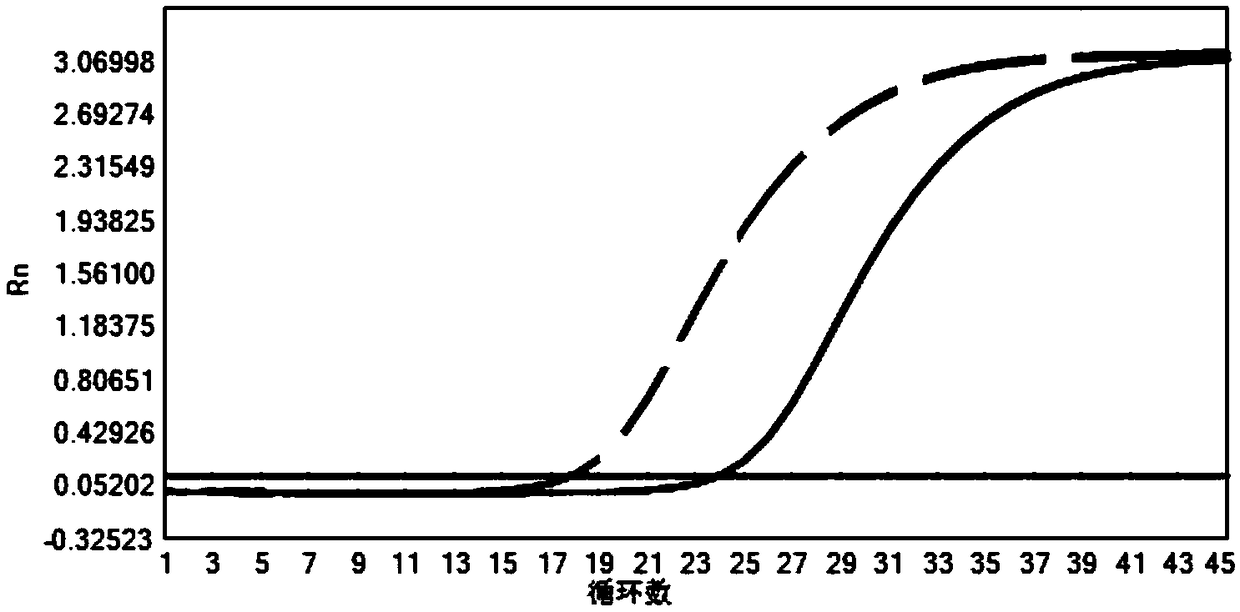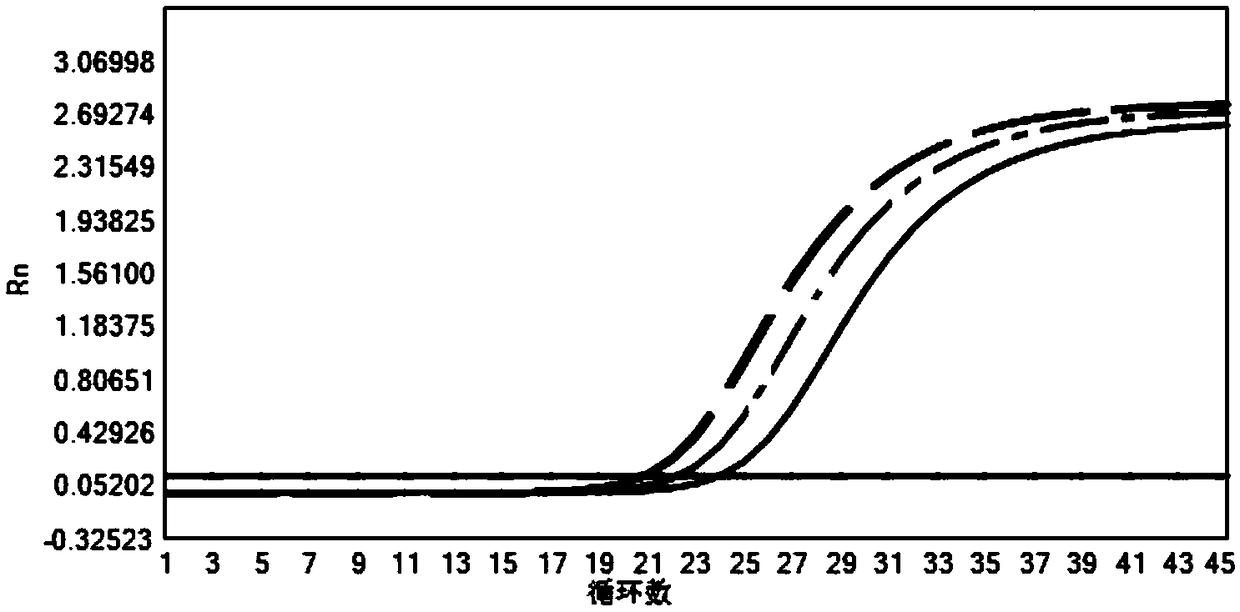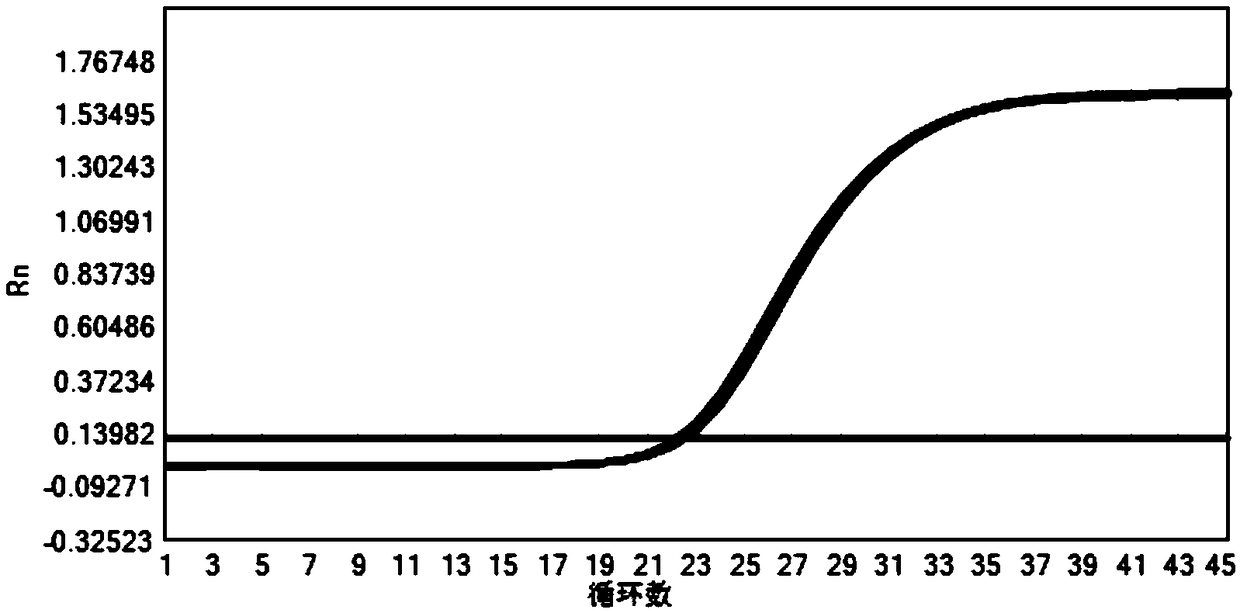Type A seneca virus detection primer, kit, virus detection method and application
A technology of virus detection and Seneca, which is applied in biochemical equipment and methods, recombinant DNA technology, microbial measurement/inspection, etc., can solve problems such as false positive pollution, affecting diagnostic accuracy, and difficult detection
- Summary
- Abstract
- Description
- Claims
- Application Information
AI Technical Summary
Problems solved by technology
Method used
Image
Examples
Embodiment 1
[0074] 1. Primer probe design and reaction system optimization
[0075] Through bioinformatics analysis, the genome sequence information of 100 strains of SVA registered in NCBI was compared, the conserved sites were analyzed, and the sequences of highly conserved regions were selected to design specific primers and probe sequences. The primer probe sequences and related information are listed in the table below.
[0076] Table 1 SVA primer and probe sequence information
[0077]
[0078] Using SVA inactivated viral nucleic acid as a template, using the above-mentioned combination of primers and probes at different concentrations, a comparative amplification test was carried out, and the evaluation was carried out from the aspects of primer amplification efficiency, probe signal-to-noise ratio, and amplification curve shape and other indicators. The optimal concentration of primers and probes for screening was: 200nM for SVA-F1, 200nM for SVA-R1, and 100nM for SVA-P1. Und...
Embodiment 2
[0097] Based on the conclusions of previous experiments, the components of this SVA real-time RT-PCR monitoring kit include: SVA-reaction solution, RNase mixture, SVA-positive control, SVA-negative control, and RNA release agent. The preparation method of each component is as follows:
[0098] (1) The SVA-reaction solution includes PCR-Buffer, dNTP, the above-mentioned SVA primer probe, and the above-mentioned internal standard primer probe. Wherein the final concentration range of SVA primers SVA-F1 and SVA-R1 in the reaction solution is 200-300nM, the concentration range of SVA-P1 in the reaction solution is 100-200nM; the internal standard primer IPC05F01 and IPC05R01 in the reaction solution The final concentration range is 100-200nM, and the final concentration range of the internal standard probe IPC05P in the reaction solution is 100-200nM; dNTP includes four deoxyribonucleosides, dATP, dUTP, dGTP, and dCTP, and dUTP is used instead of the commonly used dTTP, so that t...
Embodiment 3
[0107] Linear Range and Amplification Efficiency Determination
[0108] The quantified recombinant plasmid pUC-sva3d was serially diluted 10 times to make the copy number range: 10 7 ~1copies / μl, each gradient is used as a template for real-time fluorescent PCR, and a standard curve is made according to the amplification results.
[0109] Such as Figure 4-5 shown. The SVA kit pairs 10 7 ~100copies / μl gradient template amplification is normal, showing linear amplification, correlation coefficient R 2 =0.99; within this linear amplification range, the amplification efficiency of the kit is 93%. According to the above results, the kit can not only be used for the qualitative determination of SVA, but also meets the requirements of quantitative determination within this linear amplification range.
[0110] Precision determination
[0111] Adjust the concentration of recombinant plasmid pUC-sva3d to 10copies / μl, as the amplification template for precision determination. The...
PUM
| Property | Measurement | Unit |
|---|---|---|
| PCR efficiency | aaaaa | aaaaa |
Abstract
Description
Claims
Application Information
 Login to View More
Login to View More - R&D
- Intellectual Property
- Life Sciences
- Materials
- Tech Scout
- Unparalleled Data Quality
- Higher Quality Content
- 60% Fewer Hallucinations
Browse by: Latest US Patents, China's latest patents, Technical Efficacy Thesaurus, Application Domain, Technology Topic, Popular Technical Reports.
© 2025 PatSnap. All rights reserved.Legal|Privacy policy|Modern Slavery Act Transparency Statement|Sitemap|About US| Contact US: help@patsnap.com



